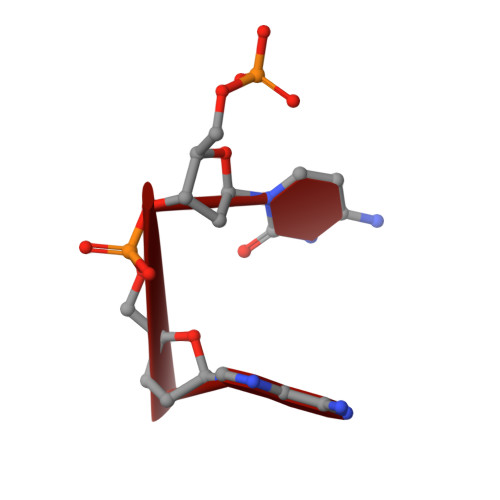Structural studies of adeno-associated virus serotype 8 capsid transitions associated with endosomal trafficking.
Nam, H.J., Gurda, B.L., McKenna, R., Potter, M., Byrne, B., Salganik, M., Muzyczka, N., Agbandje-McKenna, M.(2011) J Virol 85: 11791-11799
- PubMed: 21900159
- DOI: https://doi.org/10.1128/JVI.05305-11
- Primary Citation of Related Structures:
3RA2, 3RA4, 3RA8, 3RA9, 3RAA - PubMed Abstract:
The single-stranded DNA (ssDNA) parvoviruses enter host cells through receptor-mediated endocytosis, and infection depends on processing in the early to late endosome as well as in the lysosome prior to nuclear entry for replication. However, the mechanisms of capsid endosomal processing, including the effects of low pH, are poorly understood. To gain insight into the structural transitions required for this essential step in infection, the crystal structures of empty and green fluorescent protein (GFP) gene-packaged adeno-associated virus serotype 8 (AAV8) have been determined at pH values of 6.0, 5.5, and 4.0 and then at pH 7.5 after incubation at pH 4.0, mimicking the conditions encountered during endocytic trafficking. While the capsid viral protein (VP) topologies of all the structures were similar, significant amino acid side chain conformational rearrangements were observed on (i) the interior surface of the capsid under the icosahedral 3-fold axis near ordered nucleic acid density that was lost concomitant with the conformational change as pH was reduced and (ii) the exterior capsid surface close to the icosahedral 2-fold depression. The 3-fold change is consistent with DNA release from an ordering interaction on the inside surface of the capsid at low pH values and suggests transitions that likely trigger the capsid for genome uncoating. The surface change results in disruption of VP-VP interface interactions and a decrease in buried surface area between VP monomers. This disruption points to capsid destabilization which may (i) release VP1 amino acids for its phospholipase A2 function for endosomal escape and nuclear localization signals for nuclear targeting and (ii) trigger genome uncoating.
Organizational Affiliation:
Department of Biochemistry and Molecular Biology, 1600 SW Archer Road, P.O. Box 100245, Gainesville, FL 32610-0266, USA.















